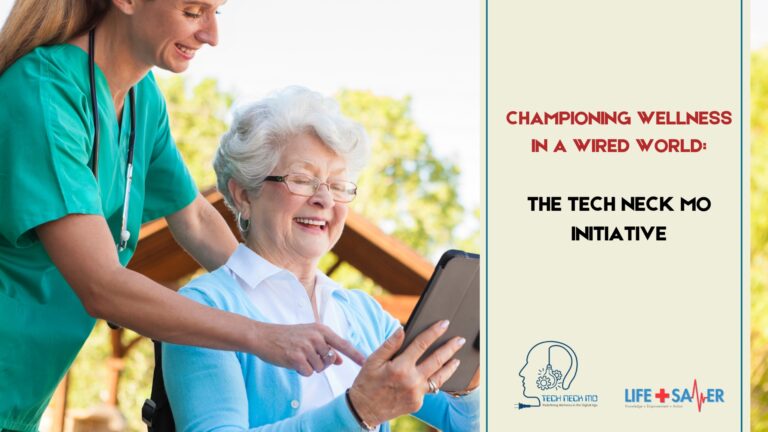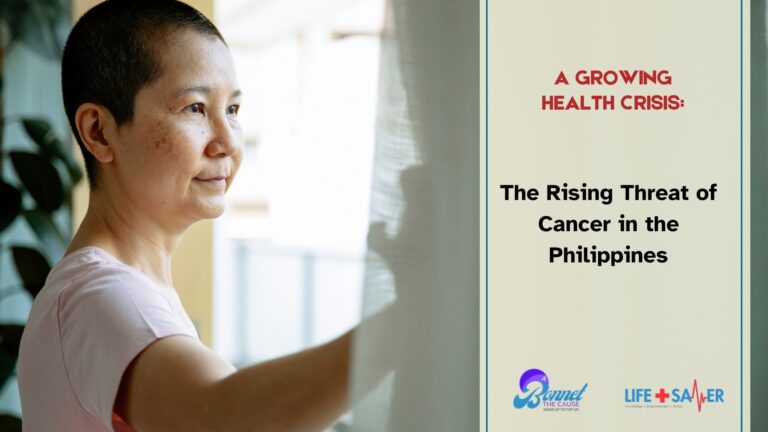Understanding Breast Cancer in the Philippines: Symptoms and Early Detection
Breast cancer in the Philippines is a significant health concern, especially for Filipino women. It is the most common cancer among Filipino women and has one of the highest mortality rates in Asia 1. Early detection is crucial in improving survival rates and treatment outcomes. This article aims to provide information on the symptoms of breast cancer and the importance of early detection, specifically within the context of the Philippines.
Recognizing the Symptoms
Breast cancer can manifest in various ways, and symptoms may differ from person to person. Some individuals may not experience any noticeable signs at all 2. Most breast changes are due to hormonal cycles or conditions that are less worrying than breast cancer 3. However, it’s important to be aware of the potential warning signs and to consult a healthcare professional if you notice any changes in your breasts.
Common Symptoms
- Lumps or Swelling: A new lump in the breast or underarm (armpit) is a common symptom. These lumps may vary in texture, feeling soft and rubbery or hard 4. Swelling in the breast, chest, or armpit can also be an indicator 5.
- Skin Changes: Changes in the skin of the breast, such as dimpling (which may resemble an orange peel) 5, redness, puckering, or a rash, should be checked by a doctor 6. It’s important to note that redness might be harder to detect on darker skin tones 5.
- Nipple Changes: Changes in the nipple, such as it turning inwards (inverted nipple), the presence of a rash, scaling, or any discharge other than breast milk (including blood), are potential warning signs 5.
- Pain: Pain in the breast or armpit that persists and doesn’t go away should be investigated 5. However, it’s important to remember that breast pain that comes and goes is not usually a symptom of breast cancer 5.
- Changes in Size or Shape: Any change in the size or shape of one or both breasts can be a symptom 2.
Less Common Symptoms
In addition to the common symptoms, there are less common types of breast cancer with distinct symptoms:
- Inflammatory Breast Cancer: This rare type can cause the entire breast to appear inflamed, feel sore and hard, and the skin may take on an orange peel texture 6.
- Paget’s Disease of the Breast: This rare skin condition may present as a scaly, itchy rash on the nipple and the surrounding area 6.
It’s crucial to understand that many of these symptoms can also be caused by benign (non-cancerous) breast conditions 7. However, it’s essential to have any new breast changes checked by a healthcare professional to determine the cause and receive appropriate treatment if needed.
The Importance of Early Detection
Early detection of breast cancer plays a vital role in increasing survival rates and improving treatment outcomes. When breast cancer is found early, while it is still small and has not spread, treatment is more likely to be successful 8. Women whose breast cancer is detected at an early stage have a 93 percent or higher survival rate in the first five years 9.
Early detection offers several benefits:
- More Treatment Options: When breast cancer is detected early, there are more treatment options available, and these treatments are more likely to be effective.
- Less Aggressive Treatment: Early detection often means that less aggressive treatments, such as lumpectomy (removing only the tumor) rather than mastectomy (removing the entire breast), may be possible 10. This can help preserve the patient’s quality of life.
- Higher Survival Rates: Studies have shown that women who have regular mammograms are more likely to have breast cancer found earlier and are more likely to be cured 11.
- Reduced Mortality: Regular screenings significantly reduce the mortality rate associated with breast cancer 10.
Breast Cancer in the Philippines
Reports indicate that the Philippines has a high incidence of breast cancer, with 17.7% of women diagnosed in 2020 12. Sadly, the Philippines also has one of the highest breast cancer mortality rates and the lowest mortality-to-incidence ratio in Asia 1. This means that a higher proportion of women diagnosed with breast cancer in the Philippines die from the disease compared to other Asian countries. This alarming statistic may be attributed to several factors, including:
- Late Diagnosis: A significant number of breast cancer cases in the Philippines are diagnosed in the later stages (Stages III and IV), when the cancer is more difficult to treat 1.
- Higher Incidence in Young Women: The incidence of breast cancer in young Filipino women (≤40 years) is higher compared to other Asian countries 13, making it a particular concern for this age group.
- Limited Access to Healthcare: Access to healthcare, including screening and treatment facilities, can be limited, especially in rural areas of the Philippines 14.
- Socioeconomic Factors: Socioeconomic factors, such as poverty and lack of health insurance, can also contribute to delays in diagnosis and treatment 15.
To further understand the severity of breast cancer in the Philippines, it’s important to look at the overall cancer landscape. In 2010, the ten top causes of cancer deaths in the country were:
- Breast Cancer
- Lung Cancer
- Liver Cancer
- Cervical Cancer
- Colon Cancer
- Leukemia
- Ovarian Cancer
- Stomach Cancer
- Prostate Cancer
- Larynx Cancer 15
Breast Cancer Screening Programs and Resources in the Philippines
While the Philippines faces challenges in breast cancer control, there are screening programs and resources available:
- Breast Cancer Control Program (BCCP): The Department of Health has established the BCCP, which focuses on public information, health education, and case finding and treatment 14. The BCCP emphasizes the importance of annual clinical breast examination (CBE) by healthcare professionals and encourages women to perform monthly breast self-examination (BSE) 1.
- Mammography: Mammography is available in the Philippines, but access can be limited due to cost and the availability of facilities 14. The Philippines has a low number of mammography machines per cancer patient, highlighting the need for increased access to this crucial screening tool 14. The American Cancer Society provides the following guidelines for women at average risk of breast cancer:
- Women between 40 and 44 have the option to start screening with a mammogram every year.
- Women 45 to 54 should get mammograms every year.
- Women 55 and older can switch to a mammogram every other year or continue yearly mammograms. Screening should continue as long as a woman is in good health and is expected to live at least 10 more years 11.
- 3D Mammography: Advancements in mammography, such as 3D mammography, offer potential benefits. 3D mammography appears to lower the chance of being called back for follow-up testing after screening and may find more breast cancers. Studies have shown it can be particularly helpful for women with dense breasts 11.
- Hope Mobi-Clinic: This program provides free breast cancer screening, including digital mammography, to underserved communities in San Juan City and Pasig City 16.
It’s important to note that while mammography is a valuable screening tool, there is a small chance of overdiagnosis, meaning a cancer might be detected that would never have caused any problems if it hadn’t been found during screening 11.
Breast Cancer Treatment Options in the Philippines
Treatment for breast cancer in the Philippines typically involves a multidisciplinary approach, with options including:
| Treatment Option | Description |
|---|---|
| Surgery | Surgical options include mastectomy (removal of the entire breast) and lumpectomy (removal of the tumor and surrounding tissue) 17. |
| Chemotherapy | Chemotherapy uses drugs to destroy cancer cells and is often used in combination with other treatments 18. |
| Radiation Therapy | Radiation therapy uses high-energy rays to kill cancer cells 18. |
| Hormone Therapy | Hormone therapy is used to block the effects of hormones that can fuel the growth of some breast cancers 17. |
| Targeted Therapy | Targeted therapies are drugs that specifically target cancer cells, often with fewer side effects than traditional chemotherapy 17. One example is alpelisib, which has been approved by the Philippine FDA for the treatment of advanced or metastatic breast cancer with a specific genetic mutation (PIK3CA) 19. |
| Immunotherapy | Immunotherapy helps the body’s immune system fight cancer 18. |
| Trastuzumab | This targeted therapy is effective for HER2-positive breast cancer, a more aggressive subtype. However, the high cost of Trastuzumab (around PHP 1 million for a full treatment cycle) can be a significant barrier for many Filipino patients 20. |
The choice of treatment depends on various factors, including the stage of the cancer, the type of cancer, the patient’s overall health, and their preferences.
Breast Cancer Awareness Campaigns and Initiatives
Several organizations in the Philippines are actively involved in raising awareness about breast cancer:
- Philippine Cancer Society: The Philippine Cancer Society provides information and support to people affected by cancer and advocates for cancer control 21.
- Life+Saver Philippines: This organization, dedicated to providing quality and equitable healthcare services to Filipinos 22, has a fundraising campaign called “Bonnet the Cause” that uses specially designed bonnets to raise awareness and funds for cancer care facilities 22.
- The Medical City: The Medical City hosted a breast cancer awareness webinar for its employees, featuring a presentation by a surgical oncologist and a testimony from a breast cancer survivor 23. This initiative highlighted the importance of early detection and dispelled the myth that most breast cancer cases are hereditary. In reality, most cases are linked to lifestyle and environmental factors, empowering individuals to take control of their health through informed choices 23.
- University of Northern Philippines: The University of Northern Philippines launched a breast cancer awareness campaign to educate students and staff about the importance of early detection 24.
- Kasuso Foundation: This non-profit organization focuses on early detection and patient navigation, providing support and resources to underserved communities in the Philippines 25 . They offer programs such as free breast screening, educational campaigns, and patient support .
These campaigns and initiatives play a crucial role in educating the public, promoting early detection, and providing support to those affected by breast cancer.
Conclusion
Breast cancer is a serious health issue in the Philippines, but early detection significantly improves survival rates and treatment outcomes. By being aware of the symptoms, understanding the importance of early detection, and utilizing available resources, women in the Philippines can take proactive steps to protect their health.
Regular self-exams, clinical breast exams, and mammograms, when appropriate, are essential tools in the fight against breast cancer. If you notice any changes in your breasts, it’s crucial to consult a healthcare professional promptly. Remember that early detection is not just about catching cancer; it’s about giving women the best chance at a long and healthy life.
While the Philippines faces challenges in breast cancer control, there is hope. Advances in breast cancer treatment, coupled with increased awareness and access to screening, are making a difference. By staying informed, supporting one another, and advocating for better healthcare access, we can work towards a future where breast cancer is no longer a leading cause of death for Filipino women.
BreastCancerAwareness #BreastCancer #Philippines #EarlyDetection #CancerScreening #LifeSaver #BonnetTheCause #Support #CancerTreatment #HealthEquity #AccessToCare
Works Cited
2. Symptoms of Breast Cancer – CDC
3. Breast Cancer and Early Detection – PMC
4. Breast cancer symptoms you shouldn’t ignore – MD Anderson
5. Symptoms of breast cancer in women – NHS
6. Symptoms of breast cancer – Cancer Research UK
7. Breast Cancer Signs and Symptoms – Cancer.org
8. Why is early cancer diagnosis important? – Cancer Research UK
9. Early Detection is Key – Carol Milgard Breast Center
10. The Importance of Getting Breast Cancer Screenings | GW Today
11. ACS Breast Cancer Screening Guidelines – American Cancer Society
12. Clinical profiles and outcomes of patients enrolled in the department of health: Breast cancer medicines access program in the philippines—A single center experience. | JCO Global Oncology – ASCO Publications
13. Young Filipino breast cancer patients have worse survival outcomes – PubMed Central
14. Breast and cervical cancer screening in the Philippines: Challenges and steps forward – PMC
15. RISK FACTORS OF BREAST CANCER AMONG WOMEN: A META ANALYSES – Philippine Statistics Authority
16. Hope Mobi Clinic | The Medical City
17. Understanding the treatment options you have for Breast Cancer – MakatiMed Blogs
18. Treatment Options – Philippine Society of Medical Oncology
19. Philippine FDA approves Novartis advanced breast cancer treatment, alpelisib – Novartis
20. Achieving health equity in cancer care in the Philippines – ecancer
21. PH Embassy Kicks off 18-Day Campaign to End Violence Against Women (VAW) with Breast Cancer Awareness Talk – Embassy of the Philippines in Singapore
22. Life+Saver Philippines – Empowering Communities. Saving Lives
23. Philippine Statistics Authority Raises Awareness in the Fight Against Breast Cancer Through Informative Webinar – Philippine Statistics Authority
24. UNP launches Breast Cancer Awareness campaign – University of Northern Philippines







